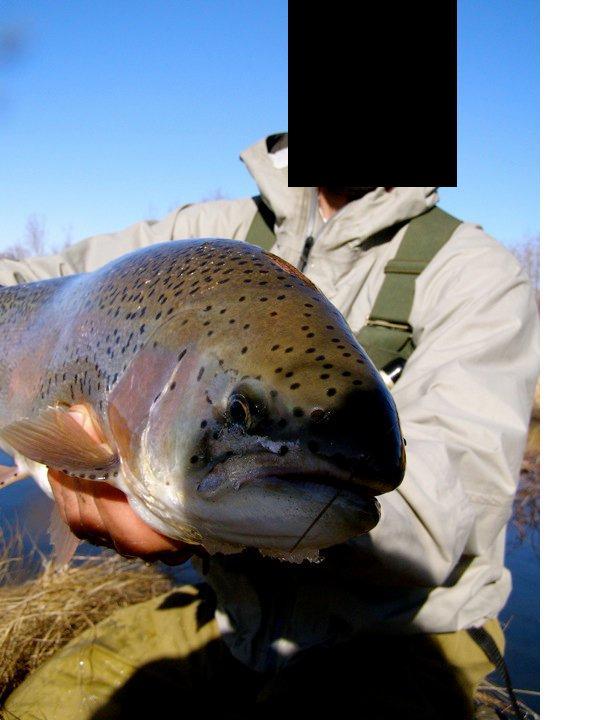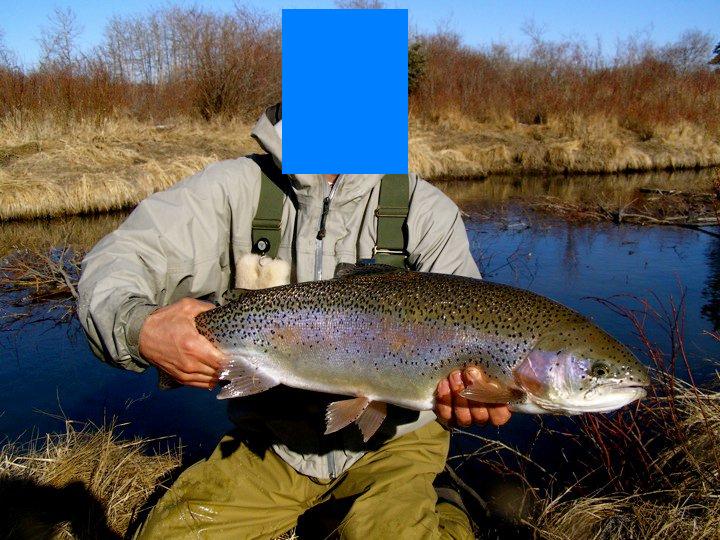-
Posts
121 -
Joined
-
Last visited
Content Type
Profiles
Forums
Events
Store
Everything posted by CTownTBoyz
-
Agreed. Blood meal works extremely well.
-
Perhaps people would be a little more understanding of these types of accidents if the industries in question were a little more prepared for these incidents. We were told for several days now that there was no leaking as a result of this accident (by the US Coast Guard in fact), and this recent report states '42,000 gallons per day' have been leaking. The environment, families, and American tax payers will pick up the bill (metaphorically and literally speaking) for a lot of the damage. People’s contempt for the oil industry is not unfounded. The Exxon Valdez, The Piper Alpha disaster, and more closer to home the recent claim by Syncrude that they are not responsible for their neglect of maintaining equipment at their tailing ponds (if they'd admit they made a mistake and paid the fine I would think people in general would have much more respect for Syncrude). Or statements such as Caustuserraticus "Did you know the original method of finding oil was natural surface seeps? This is true in the Gulf and all over the world.".......you're not actually comparing a human disaster / spill of this magnitude to the discovery of oil in the Gulf are you? The oil industry could do some things to improve their image and safety but more often than not they wait for things to happen (then fix the problem....sometimes). For instance, there has been recommendations by several outside parties that oil tankers be double-hulled so if they run aground they reduce the risk of spillage; this hasn't happened....too expensive for the wealthiest industry in the world? I don't think anyone can deny that changes have to be made for the health and safety of all living entities. Changes are being made no doubt, but to suggest enough is being done is pure rubbish.
-

Just Another Fish Story!
CTownTBoyz replied to kungfool's topic in General Chat - Fly Fishing Related
Nice one! and a great story! -
It must be hard to fill your freezer if people are following the regulations ie. 1 fish/day/home 6 fish/month/home 24 fish/year/home I can sympathize with people who want a trophy fishery as well. That said, it's Lake Sundance, a community pot-hole lake meant for both Fly Fisherman, and individuals who want to bait fish and bring a fish(s) home for dinner. As to the '20/20 club' you are referring to; true, the size of tippet doesn't allow a lot of horsing when you're trying to land them, but it can be done quickly (3lb. and 4lb. test is incredibly strong). I think more often than not the tippet strength issue is compounded and made much worse when it is matched with a 3 weight or some other ultra light rod. I am guilty of this myself. When I was in my early twenties (mid nineties) I regularly used a 3 weight on the Bow while dry-fly fishing. On another occasion when Sage introduced their '0' weight I went and tested one out on the Bow during the height of runoff (thinking there is no way I'm catching a thing that day....just trying out the rod) only to hook up with a 23" brown. I learned a lot about light rods and big fish from that fight. You can fight even very large fish from far away with the lightest rod, it's when they get close and you need to lift them that it becomes an issue. That fish ran well into the main current on the first run and it took me under a minute to get him within 20 feet. It took me another five minutes to bring him to hand; the rod simply couldn't lift him.
-
It is actually far better not to handle a fish at all and just use forceps, particularly if you are in a position to handle the fish if it becomes necessary. ALL nets remove the protective mucoprotein slime from a fishes skin. This is only true if the fish is fresh and revived and able to swim away with conviction. A weak fish, immobilized by lactic acid build up is not in a position to just get dumped back into the water. They need time to revive. The rubberized nets are very good at not removing the fish slime. Forceps don't remove mucoprotein, while rubberized nets do, if you can choose - no net is a better option. To your point, I think we all agree that a fish requires handling if it goes belly-up. And just out of curiosity, do you use a rubberized net? Furthermore, fish that go belly-up after release don't always die. I've witnessed several instances of fish laying sideways or upside down on the bottom - only a few minutes later they gain their composure and swim away. No they don't always but a high enough percentage would such that why not release properly. Revive then release. If they are locked in lactic acid build up or since into the weeds and get stuck and they can't breath...it is such a waste I don't think you fully understand Lactic Acid build-up. It does not dissipate because of time taken to release a fish; there has been several studies done that prove this point. There are a few fisheries biologists on this board; perhaps one of them will reference the exact studies (I currently have no access to Electronic Journals). There is an article by Harvey Thomassen on ariverneversleeps.com which discusses this Lactic Acid build-up (albeit in general terms) and post release mortality. An Excerpt from the article; Playing a fish for a long time can cause lactic acid to build up in the blood, which can be fatal hours or even days after a fish has been released. In one study 8% of 101 fish hooked on flies and lures and played to exhaustion died within a few hours of release. In another study, 20% of rainbow trout played to exhaustion and released were dead by day three; 80% died by day five, and 87% died by day ten. Lactic acid does not increase significantly in blood when rainbow trout are played for two or three minutes - but fish played four or more minutes do have significantly higher levels. Fish going belly-up post release have more to do with water temperature, improper gear, unnecessary handling and prolonged fighting rather than the actual method of release. An experienced / smart angler knows these things. That said, it takes years to learn and master what is ultimately (no matter how experienced or smart you are) , a blood sport. No...IMHO I must disagree and suggest it has more to do with straight lactic acid build up in the muscle tissue. They need time to revive and helping keep them in a position that they can breath and letting them move and stretch in well oxygenated water is better than lying belly up in the weeds and mud. You commend on prolonged fight is what causes lactic acid build up. I also find the big pig stockers are like sumo wrestlers that have never exercised a day in there life. Catching them and giving them a hard work out requires care and attention prior to release. Water temp can make this worse for sure. To light of gear and improper handling is a factor in the prolonged fight concern. Again to reiterate, just because you take time to release a fish does not mean the lactic acid will leave their body. Over playing a fish and using improper gear are the real culprits in lactic acid build-up and the metaphorical band-aid after an excessive fight has little impact, no matter how much time and care is taken. The 'big pig stockers' are like 'sumo wrestlers' that have never exercised a day in their life'; I totally agree. In that sense there is little difficulty in landing them quickly with the right gear (speaking from personal experience). I've noticed three common factors for fish going belly-up post release. 1. The fish was caught deep in a lake during peak warm summer periods and released at the lakes surface or shore (not many other options unless you fish with scuba gear), or the fish was caught in deep fast water in a river and released near the shore in warm water. The only way to avoid this is not fish those waters during those warm spells. In the last several summers there have been instances of water temperature increases to extremely dangerous levels. I can speak for myself and several of the other anglers I fish with and say that we choose not to fish waters that are effected during these warm spells (if one chooses to fish them that is their choice of course - IMHO it is not the best idea). We all use the proper gear and land fish as quickly as possible. 2. The fish was played to exhaustion because of lack of experience (happens to everyone), or the angler was using improper gear (bad form, however, the pro-angling community is largely to blame for this with their marketing slogan 'use the lightest tackle against the biggest fish'...that idea was dominant from the early eighties through to only six or seven years ago.....several anglers still adhere to this ridiculous mantra). 3. The fish has a mortal wound. I had two fish go belly-up on me in the last year; both had mortal wounds. The longest fight I had with a trout in the last year was under three minutes (brown trout / 24" / 5 lbs. - was netted by the way because of the geography). The longest fight I had with a fish in the last year was with a bonefish and went on about five minutes - with a 9 weight and 12lb test - and I lost him.
-
Elusive and hard to catch? That is an understatement. Excellent fish.
-
I will use a net sometimes (always from a boat), but from shore they are often unnecessary. It is actually far better not to handle a fish at all and just use forceps, particularly if you are in a position to handle the fish if it becomes necessary. ALL nets remove the protective mucoprotein slime from a fishes skin. Furthermore, fish that go belly-up after release don't always die. I've witnessed several instances of fish laying sideways or upside down on the bottom - only a few minutes later they gain their composure and swim away. Fish going belly-up post release have more to do with water temperature, improper gear, unnecessary handling and prolonged fighting rather than the actual method of release. An experienced / smart angler knows these things. That said, it takes years to learn and master what is ultimately (no matter how experienced or smart you are) , a blood sport. Mortality is inevitable.
-

Your Largest Bow River Trout/char
CTownTBoyz replied to bigbowtrout's topic in General Chat - Fly Fishing Related
-

Your Largest Bow River Trout/char
CTownTBoyz replied to bigbowtrout's topic in General Chat - Fly Fishing Related
-
Radical. Great Tie!
-

Your Largest Bow River Trout/char
CTownTBoyz replied to bigbowtrout's topic in General Chat - Fly Fishing Related
So true. On another note it is amazing what a good Spin-Fisher can do with the right gear. I've been on a few dozen trips where clients pulled out spinning rods and big lures. The action and speed of lures such as Rapalas is unmatched and can really turn fish when they're on big stuff. Flies, no matter what the design can't do what those lures can do, and there is the part of control. Rapala style flies are cool and have simliar action but they are far too difficult to control and the speed of retrieve necessary to impart action is unattainable for most anglers. I also don't think many of the fish on the Bow have seen 'hardware' - it's new and it looks good, hence they'll eat with less caution than with the few thousand streamers they see weekly. -

Your Largest Bow River Trout/char
CTownTBoyz replied to bigbowtrout's topic in General Chat - Fly Fishing Related
I saw a picture of a "34 inch" Brown from the Bow - caught at Carlsland with a Buzz Bomb. There was no tape measure in the picture. Maybe it wasn't 34 inches, but it was definitely over 30 inches. My personal best - taped 26 inches on a Caddis, one foot from the bank below Vic's tree, August 2004. I guided a client into a taped 28 inch brown - mouth of the Highwood, July. It was one of only two fish all day.....on a 5 inch floating Rapala. -
Although this individual’s behavior is less than acceptable, the whole story seems slightly exaggerated (which by the way, considering the source, doesn't surprise me or likely anyone else). Sundancefisher wrote: “ My frustration on this stems from the fact these fish cost $50 to stock...we are trying to manage for a quality fishery...there are limited fish and they are getting caught repeatedly so killing one does a huge disservice to other fishermen as these big dead fish are a waste on the bottom of the lake.” You and your friends may be managing the Lake as a ‘quality fishery’ but there is nothing in the Lake Sundance rules that indicates this as an official policy. Large fish caught repeatedly will eventually die (probably a lot sooner than you think) - as someone trained in Science, you should know that. You should also they’re “not a waste on the bottom of the lake”, or for that matter - in my freezer. I fish Lake Sundance occasionally and I keep my limit (1) every time. That said, I wouldn't keep a 9lb. 'grown in a hatchery' worn out rainbow. Thing is, the fish in these "put and take" fisheries really aren't all that special. The big ones are more often than not spent hatchery breeders, hence the often unmistakable worn out tails (not always but often). People should release fish properly, but no matter what apparently happened that day - it didn't occur on the Bow or any other public fishery. T




